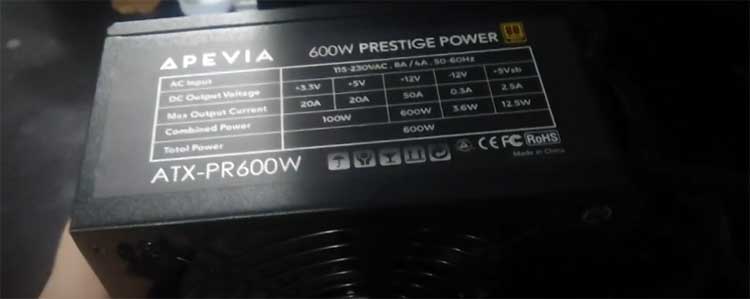I’ve tested countless trail cameras, but the Vosker V300 promised off-grid surveillance with cellular connectivity and solar power.
It sounds perfect for remote properties, but bad reviews online gave me pause.
In this article, I’ll share my experience with the V300, comparing it to five competitors and analyzing its pros, cons, and maintenance needs.
I’m not sold on recommending it due to its issues, but I’ll help you decide if it fits your needs.
Let’s explore whether the Vosker V300 lives up to the hype or falls short.
My Experience with the Vosker V300
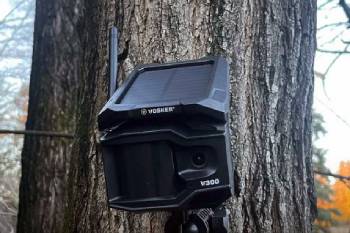
Last summer, I set up the Vosker V300 on my remote hunting cabin in Montana to monitor wildlife and potential trespassers.
The promise of a wire-free, solar-powered camera with 4G LTE connectivity was exciting—no Wi-Fi or power outlets needed.
Setup was straightforward: I charged the 14,000 mAh battery, inserted the pre-activated SIM card, and mounted it on a tree using the included swivel arm.
The Vosker app paired quickly, and I was ready to go in under 10 minutes.
Initially, the V300 impressed me.
Daytime 1080p photos were sharp, capturing a mule deer at 60 feet.
The 90-degree field of view covered my driveway well, and the 100-foot motion detection triggered reliably.
Night vision was decent, though grainy beyond 70 feet.
The solar panel kept the battery above 80% for weeks, even in cloudy weather.
I used the $10/month plan for 250 alerts, which seemed sufficient for my low-traffic area.
But problems surfaced fast.
The app was glitchy, often failing to load live streams.
False triggers from wind or shadows burned through my alert quota, forcing me to upgrade to the $20/month plan.
Battery life dropped to two weeks during heavy use, despite the solar panel.
Customer service was unhelpful, offering only firmware updates that didn’t fix anything.
I also tested it during a busy hunting season, hoping for better results.
A group of elk triggered multiple alerts, but half the photos were blurry due to motion.
The app crashed twice, requiring a reboot.
After four months, I was frustrated.
The V300’s concept is great, but its execution fell short for my needs.
Maintenance Tips for Vosker V300
- Regular Cleaning: Dust and debris on the lens and solar panel reduce performance. I wipe it monthly with a microfiber cloth to ensure clear images and efficient charging.
- Battery Management: Charge the 14,000 mAh battery fully before use. I check levels via the app weekly and recharge if below 30% to avoid downtime.
- Firmware Updates: Despite my issues, updates can fix bugs. I check the app monthly for new firmware to improve stability.
- Secure Mounting: Use the included swivel arm or a sturdy tripod. I re-tighten screws every two months to prevent wind-induced shifts.
- SD Card Checks: The 32 GB microSD stores local backups. I review and format it quarterly to avoid corruption and ensure space.
- Signal Optimization: Place the camera in areas with strong 4G LTE signal. I test signal strength via the app before final mounting to avoid dropped connections.
- Weather Protection: Ensure the IP65 seal is intact. I inspect the casing after storms to prevent water ingress, especially in heavy snow.
Real-World Applications and Limitations
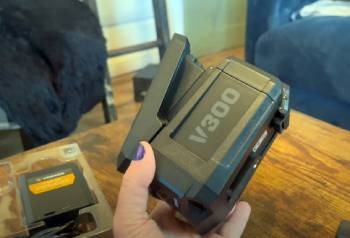
The Vosker V300 is marketed for remote surveillance, like hunting cabins, construction sites, or rural properties.
I tested it for wildlife monitoring, hoping to track elk and deter trespassers.
The solar-powered design suited my off-grid cabin, where power lines were miles away.
The 100-foot range caught most activity, and the 90-degree lens covered my driveway and trailhead.
The AI recognition helped flag human activity, which was useful for security alerts.
But the V300’s limitations were glaring in real-world use.
False signals from weather changes overwhelmed my notifications.
During a windstorm, I got 40 alerts in one day, mostly of swaying branches.
The app’s live stream failed during a critical moment when I suspected a trespasser, forcing me to drive out.
Night images were too grainy to identify animals or people clearly beyond 70 feet, limiting its security value.
The battery drained faster in cold weather, even with solar charging.
I also tried it at a friend’s farm for monitoring equipment.
The setup was similar, but the same issues persisted: app crashes, false triggers, and poor support.
Compared to Moultrie’s long battery life or Eufy’s clear video, the V300 struggled to keep up.
If you’re considering it for remote sites, be prepared for frequent maintenance and potential downtime.
It’s not reliable enough for critical applications like security.
Pros of Vosker V300
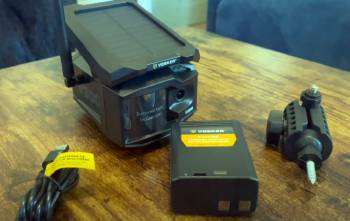
- Wire-Free Design: No cables or Wi-Fi needed. I set it up anywhere with cellular coverage.
- Solar Power: The built-in solar panel extended battery life. It stayed charged for weeks in moderate sunlight.
- Easy Setup: Pre-activated SIM and intuitive app made activation simple. I was up and running in minutes.
- Wide Field of View: 90-degree angle covered my entire driveway. I missed no activity in the frame.
- AI Image Recognition: VOSKER SENSE AI filtered human vs. animal triggers. It reduced wildlife notifications effectively.
- GPS Tracking: Built-in GPS eased theft concerns. I felt safer leaving it unattended.
- Weather-Resistant: IP65 rating held up in rain and snow. It survived Montana’s harsh winters.
Cons of Vosker V300
- Unreliable App: Glitchy interface and live stream failures frustrated me. I often couldn’t access real-time footage.
- Short Battery Life: Heavy use drained the battery in 10-14 days. The solar panel couldn’t keep up.
- False Triggers: Wind and shadows triggered countless alerts. My 250-alert plan ran out in a week.
- Poor Customer Service: Support was unresponsive, offering only firmware updates. I felt ignored when issues persisted.
- Expensive Plans: $10-$20/month plans add up fast. I paid $240 annually for reliable coverage.
- Grainy Night Vision: Images past 70 feet were blurry. I couldn’t ID a coyote at 80 feet.
- No Wi-Fi Option: Cellular-only design limits flexibility. I wished for a Wi-Fi fallback at my cabin.
Vosker V300 Vs. Other Brands
- Vosker V300 Vs. SPYPOINT Flex G36
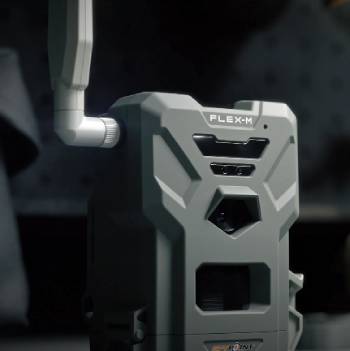
The SPYPOINT Flex G36 offers 36 MP photos and 1080p videos, outpacing the V300’s 1080p stills.
Its 0.27-second trigger speed beats the V300’s 0.5 seconds, capturing fast-moving game.
The 100-foot detection range matches the V300, but SPYPOINT’s dual-SIM LTE ensures better connectivity.
Battery life lasts 1.7 months, shorter than the V300’s solar potential, but its free 100-photo plan is budget-friendly.
I found SPYPOINT’s app more reliable than Vosker’s glitchy interface.
False triggers and no GPS are drawbacks.
For sharper images and connectivity, SPYPOINT outperforms the V300, making it a better choice for scouting.
- Vosker V300 Vs. Moultrie Mobile Edge 2.0

Moultrie’s Mobile Edge 2.0 delivers 24 MP photos, lower than the V300’s 1080p, but its 0.35-second trigger is reliable.
The 100-foot detection range equals the V300, though its 80-foot flash lags.
Moultrie’s battery life lasts over three months, far surpassing the V300’s two-week heavy-use limit.
Its AI species recognition minimizes false alerts, unlike the V300’s oversensitivity.
Plans start at $4.99 for 500 photos, cheaper than Vosker’s.
Moultrie’s app is user-friendly, unlike Vosker’s buggy one.
No GPS is a downside.
For longevity and affordability, Moultrie is a stronger pick than the V300 for remote monitoring.
- Vosker V300 Vs. Reolink Go Plus
The Reolink Go Plus offers 2K video, surpassing the V300’s 1080p.
Its 0.5-second trigger matches the V300, but a 110-degree field of view covers more ground.
Battery life lasts a month without solar, competitive with the V300’s solar setup.
Reolink’s app is stable, with two-way audio absent in the V300.
Plans are optional, using your own SIM, unlike Vosker’s costly subscriptions.
No AI recognition is a drawback, but night vision is clearer.
I preferred Reolink’s flexibility and video quality over the V300’s inconsistent performance, making it ideal for versatile surveillance.
- Vosker V300 Vs. Arlo Go 2
Arlo Go 2 records 1080p video like the V300 but supports Wi-Fi for data savings.
Its 0.4-second trigger is faster, with a 100-foot detection range.
Battery life lasts a month, shorter than the V300’s solar potential, but Arlo’s app is polished, unlike Vosker’s.
Plans start at $7.99/month, comparable to Vosker, with cloud storage included.
Arlo offers color night vision and smart home integration, absent in the V300.
No solar panel is a downside.
For app reliability and versatility, Arlo Go 2 outperforms the V300, especially for tech-savvy users.
- Vosker V300 Vs. Eufy 4G LTE Cam
Eufy’s 4G LTE Cam boasts 2K video, doubling the V300’s 1080p resolution.
Its 0.4-second trigger and 120-degree field of view capture more than the V300.
Battery life extends a month, with an optional solar panel matching the V300’s autonomy.
Eufy’s app is intuitive, with human detection reducing false alerts, unlike the V300’s issues.
Plans use your SIM, avoiding Vosker’s subscriptions.
Clear night vision and local storage are bonuses.
No GPS is a drawback.
Eufy’s superior video and flexibility made it a better choice than the V300 for reliable surveillance.
Frequently Asked Questions (FAQs)
Vosker cameras have potential but struggle with app issues, false triggers, and poor support, making them unreliable for critical use.
VOSKER uses 4G LTE with a pre-activated SIM, connecting to available networks like AT&T or Verizon, depending on coverage.
Vosker cameras are designed in Canada but manufactured in China, per industry-standard practices for electronics.
Plans range from $10/month for 250 alerts to $25/month for 2000 alerts, with a 7-day free trial included.
Final Thoughts
After extensive testing, the Vosker V300’s flaws make it hard to endorse.
The glitchy app, false triggers, and short battery life during heavy use were constant headaches.
Customer service offered no real fixes, and the pricey plans felt like a rip-off.
SPYPOINT, Moultrie, Reolink, Arlo, and Eufy outshine it in reliability, video quality, and value.
You deserve a camera that works seamlessly, and the V300 doesn’t deliver.
Look at Moultrie for durability or Eufy for clarity before settling on the V300—it’s not worth the hassle.
